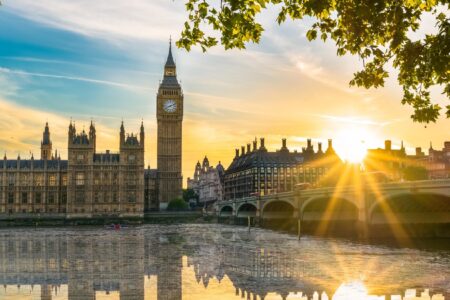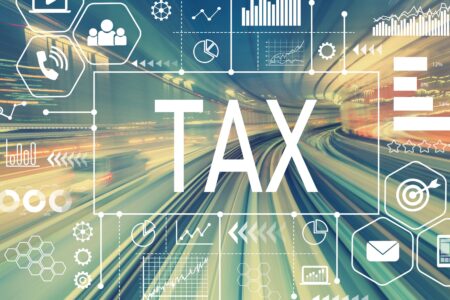A Definitive Budget?
Updated 4 May 2020
Overview
The Chancellor’s Budget on 11 March 2020 had been eagerly anticipated. After 4 years of ‘holding the fort’, many hoped for a definitive vision of the fiscal future from the Government.
As it happened this was slightly superseded by a need to bolster the economy against the impact of COVID-19 and continued uncertainty over a deal with Europe. The result was a £30bn package to get us through a “significant but temporary disruption to the UK economy” to allow the necessary borrowing.
It was also telling that the Bank of England announced an emergency cut in interest rates to 0.25% before the Chancellor stood up to speak.
A balancing act
Following calls for increased Government spending in the areas of health, housing, climate change and economic regeneration (to name but a few), there was inevitably going to be an adjustment of the taxes required to fund it.
Helping businesses and communities cope with coronavirus
Obviously a key priority was to help the economy cope with the pressures of the current virus and the Chancellor announced:
- Those employers with fewer than 250 staff will be able to reclaim 100% of employees' first two weeks of statutory sick pay resulting from COVID-19 (Coronavirus)
- Business rates for firms in England with a rateable value below £51,000 are suspended for a year
- A new £1.2bn business interruption loans fund for small businesses. Banks will provide these loans (of up to £1.2m per eligible business), with an 80% Government guarantee backing the loans to deliver working capital.
Other support for businesses
Whilst corporation tax will remain static at 19%, other measures have been proposed to boost certain areas – construction and engineering ( £600bn is set to be spent on roads, rail, broadband and housing by the middle of 2025), the Structural Buildings Allowance for businesses has risen from 2% to 3% and further investment is promised to support research and development.
Adjusted taxes to fund investment
A number of taxes and reliefs were adjusted to support the Government spending needed for the NHS, Flood Defences and Infrastructure. These included:
- The Entrepreneurs' Relief lifetime threshold reduces from £10m to £1m
- A 2% Stamp Duty surcharge is introduced for UK non-residents
- A plastic packaging tax is to come into force from April 2022
- The 'Red Diesel' tax relief will be scrapped for off-road vehicles (but Farmers and Rail Operators are excluded)
A thank you to voters
But, and perhaps as a reward to voters for the Government's current majority, there were some sweeteners sprinkled in:
- The National Insurance Contribution threshold has risen from £8,632 to £9,500
- The tapered allowance threshold for pensions tax relief will increase to £200,000
- The Stamp Duty Land Tax rates for residential and non-residential property in England and Northern Ireland remain frozen
- Fuel and alcohol duties also remain frozen
Introduction
“….get it done” was a recurrent phrase in the Budget speech of the new Chancellor, Rishi Sunak. It could equally have been “get it spent” or “get it borrowed” as Mr Sunak announced a raft of spending initiatives with few supporting tax increases.
His performance did not follow the standard playbook for the first Budget after a general election. Such set pieces have generally been when a Chancellor takes advantage of his distance from the next visit to the polls to deliver the bitter medicine of tax rises. However, with the threat to the global economy caused by the coronavirus pandemic these were not normal times. The Office for Budget Responsibility (OBR) was expected to cut projected UK economic growth even before the virus emerged. Its pre-measures forecasts were all closed by 25 February, meaning that the coronavirus effect was “largely confined to a modestly weaker outlook for growth in world trade and the UK’s export markets”.
Mr Sunak had the benefit of seeing what happened since that date and clearly decided that the medicine required was a large dose of tonic, rather than tax. He announced a total package of fresh spending for 2020/21 of £30 billion, of which £12 billion was directly attributed to countering the impact of coronavirus on the UK economy and NHS finances.
Total government borrowing was increased for the next five years by over £110 billion as a result of decisions taken in this Budget. But this is not the end of the story, as another Budget is due in the autumn. By then the consequences of coronavirus should be clearer and we may see other topics addressed, such as inheritance tax reform, which were understandably put on hold this time around.
Key Highlights
- The Chancellor announced a £12 billion “temporary, timely and targeted” coronavirus stimulus on top of an £18 billion increase in general public spending, but tax measures were relatively few.
- The pension annual allowance thresholds will each be increased by £90,000 from 2020/21, removing taper as an issue for most people with incomes under £200,000.
- The capital gains tax entrepreneurs’ relief lifetime limit has been cut from £10 million to £1 million with immediate effect.
- The annual investment limit for junior ISAs and child trust funds will be increased to £9,000 from 2020/21.
- The national insurance contributions employment allowance will increase from £3,000 to £4,000 from April 2020.
- There will be a review of the taxation of funds to make the UK more attractive for fund management. It will also consider the VAT treatment of fund management fees.
- From April 2021, only zero emission vehicles will get 100% first year allowances. Cars with emissions up to 50g/km will have an 18% a year writing down allowance; for higher emitters the allowance will be 6% a year.
- From April 2022, red diesel (and rebated biofuels) will only be available to users for agriculture, rail and non-commercial heating.
- E-publications (e-books, e-newspapers, e-magazines and academic e-journals) will be VAT zero-rated from 1 May (brought forward from 1 December as a result of the coronavirus, see here).
In our 2020 Budget Summary which follows, you will find both overviews and detailed information for personal, business and property-related taxes.
Personal Taxation
| Main personal allowances and reliefs | 2020/21 | 2019/20 | |
| Personal allowance (1) | £12,500 | £12,500 | |
| Married couple's / civil partner's transferable allowance | £1,250 | £1,250 | |
| Married couple's / civil partner's allowance at 10% (2) (if at least one born before 6/4/35) |
maximum minimum |
£9,075 £3,510 |
£8,915 £3,450 |
| Blind person's allowance | £2,500 | £2,450 | |
| Rent-a-room tax-free income | £7,500 | £7,500 | |
Registered pension schemes
|
£1,073,100 £40,000 £4,000 |
£1,055,000 £40,000 £4,000 |
(1) Personal allowance reduced by £1 for every £2 of adjusted net income over £100,000.
(2) Reduced by £1 for every £2 of adjusted net income over £30,200 (£29,600 for 2019/20), until the minimum is reached.
(3) Reduced by £1 for every £2 of adjusted income over £240,000 (£150,000 for 2019/20) to a minimum of £4,000 (£10,000 for 2019/20), subject to threshold income being over £200,000 (£110,000 for 2019/20).
| Income tax rates and bands | 2020/21 | 2019/20 |
| UK taxpayers' excluding Scottish taxpayers' non-savings income | ||
| 20% basic rate on first slice of taxable income up to | £37,500 | £37,500 |
| 40% higher rate on next slice of taxable income over | £37,500 | £37,500 |
| 45% additional rate on taxable income over | £150,000 | £150,000 |
| All UK taxpayers | ||
| Starting rate at 0% – on band of savings income up to (4) | £5,000 | £5,000 |
| Personal savings allowance at 0%: basic rate taxpayers higher rate taxpayers additional rate taxpayers |
£1,000 £500 £0 |
£1,000 £500 £0 |
| Dividend allowance at 0% tax – all individuals | £2,000 | £2,000 |
| Tax rates on dividend income: basic rate taxpayers higher rate taxpayers additional rate taxpayers |
7.5% 32.5% 38.1% |
7.5% 32.5% 38.1% |
(4) Not available if taxable non-savings income exceeds the starting rate band.
| Scottish taxpayers' non-dividend, non-savings income | 2020/21 | 2019/20 |
| 19% starter rate on taxable income up to | £2,085 | £2,049 |
| 20% basic rate on next slice up to | £12,658 | £12,444 |
| 21% intermediate rate on next slice up to | £30.930 | £30,930 |
| 41% higher rate on next slice up to | £150,000 | £150,000 |
| 46% top rate on income over | £150,000 | £150,000 |
| Trusts | 2020/21 | 2019/20 |
| Standard rate band generally Dividends (rate applicable to trusts) Other income (rate applicable to trusts) |
£1,000 38.1% 45% |
£1,000 38.1% 45% |
| High income child benefit charge: 1% of benefit per £100 adjusted net income of £50,000 – £60,000. | ||
Income tax
The personal allowance will remain at £12,500 and the higher rate threshold will stay at £50,000 for 2020/21, as announced in the 2018 Budget. In Scotland, the higher rate threshold for non-savings, non-dividend income will also be unchanged at £43,430.
Off-payroll working (IR35)
The responsibility for operating the off-payroll working rules in the private and third sectors will move from individual workers to the organisation, agency or other third party engaging them. Originally intended to come into force on 6 April 2020, this change has now been pushed back a year to April 2021 as one of the Government's Covid-19 support measures for businesses.
Car benefit
The car benefit scale charge percentages for 2020/21 will be restructured, taking account of the recently introduced Worldwide Harmonised Light Vehicle Test Programme (WLTP) emissions standards. The scales for 2020/21 are as follows:
All zero CO2 emission vehicles: 0%
Petrol and diesel hybrids with CO2 emissions 1-50g/km
| Range – electric-only miles | < 30 | 30-39 | 40-69 | 70-129 | 130 + |
| Registered pre-6/4/20 (NEDC) | 14% | 12% | 8% | 5% | 2% |
| Registered post-5/4/20 (WLTP) | 12% | 10% | 6% | 3% | 0% |
| All non-diesel cars over 50 g/km CO2 | 51-54 | 55 & over |
| Registered pre-6/4/20 (NEDC) | 15% | 16%* – 37% |
| Registered post-5/4/20 (WLTP) | 13% | 14%* – 37% |
| All diesels that do not meet RDE2 standards: add 4% to the above, subject to a maximum 37% scale charge. | ||
*Increased for every extra 5g/km by 1% up to the maximum 37%
The rates will increase by 1% in 2021/22 and a further 1% in 2022/23 before being frozen until 2024/25.
Increasing the flat rate deduction for homeworking
From April 2020 the maximum flat rate income tax deduction available to employees to cover additional household expenses will increase from £4 per week to £6 per week, where they work at home under homeworking arrangements.
Tax treatment of welfare counselling provided by employers
The scope of non-taxable counselling services will be extended from April 2020 to include related medical treatment when it is provided to an employee as part of an employer’s welfare counselling services.
Employment allowance
The employment allowance will be increased from £3,000 to £4,000 a year for 2020/21, as previously announced. But it will be restricted to employers with an employer Class 1 national insurance contributions (NICs) bill below £100,000 in 2019/20.
National insurance contributions
The primary threshold (employee contributions) for Class 1 NICs and the lower profits limit for Class 4 NICs will rise to £9,500 for 2020/21, as announced in January 2020. However, the secondary threshold (employer contributions) will not move in parallel, but instead it will increase to £8,788.
SAVER TIP
Don’t lose your personal allowance. Your personal allowance of £12,500 in 2020/21 is reduced by 50p for every pound by which your income exceeds £100,000. You could make a pension contribution or a charitable gift to bring your income below £100,000.
Pensions, Savings and Investments
Tapered annual allowance for pensions
The two tapered annual allowance thresholds for pensions will each be raised by £90,000 from 2020/21. The ‘threshold income’ figure will therefore be £200,000 and the ‘adjusted income’ figure will be £240,000. This will help many people, such as medical consultants, who have faced large tax bills on extra pay. While the rate of taper is unchanged, the minimum annual allowance for the highest earners from April 2020 will be reduced from £10,000 to £4,000 – at an ‘adjusted income’ of £312,000 or more.
Lifetime allowance for pensions
The lifetime allowance for pension savings will increase to £1,073,100 for 2020/21, in line with inflation.
Individual savings account (ISA) subscription limits
The ISA annual subscription limit for 2020/21 will remain at £20,000. However, the annual subscription limit for junior ISAs (JISAs) and child trust funds (CTFs) will more than double, from £4,368 to £9,000.
Top slicing relief on life insurance policy gains
In response to the Silver First-Tier Tribunal case, legislation will specify how allowances and reliefs must be set against life insurance policy gains. This measure will apply to all relevant gains occurring on or after 11 March 2020.
Review of the UK funds regime
A review of the UK funds regime will be undertaken during 2020, covering direct and indirect tax, as well as relevant areas of regulation. A consultation paper will examine whether there are “targeted and merited” tax changes that could help to make the UK a more attractive location for companies used by funds to hold assets. The review will also consider the VAT treatment of fund management fees and other aspects of the UK funds regime.
Call for evidence on pension tax administration
Depending on how their pension scheme administers tax relief, people earning around or below the level of the personal allowance may or may not benefit from a top-up on their pension savings equivalent to the basic rate of tax.
A review of the options for addressing the differences will begin shortly with a call for evidence on pensions tax relief administration.
Venture capital trusts (VCTs) and enterprise investment schemes (EISs)
The venture capital limits and reliefs remain unchanged, as detailed below.
| Venture capital allowances and reliefs | 2020/21 | 2019/20 |
| Venture capital trust at 30% | £200,000 | £200,000 |
| Enterprise investment scheme at 30% (1) – EIS eligible for capital gains tax deferral relief |
£2,000,000 No limit |
£2,000,000 No limit |
| Seed EIS (SEIS) at 50% – SEIS capital gains tax reinvestment relief |
£100,000 50% |
£100,000 50% |
(1) Investment above £1,000,000 must be in knowledge-intensive companies
THINK AHEAD TIP
The pension lifetime allowance will rise by £18,100 from 6 April 2020. If you plan to draw from your pensions and already have funds exceeding the current £1,055,000 lifetime allowance limit, you may want to wait before taking your pension benefits.
THINK AHEAD TIP
The dividend allowance and personal savings allowance has been frozen since 2018/19. Your ISA allowance is £20,000 in 2019/20 and 2020/21 – use it or lose it.
Capital Taxes
Capital gains tax (CGT): annual exempt amount
The annual exempt amount for individuals and personal representatives will rise to £12,300 for 2020/21, while the amount for most trustees will increase to £6,150 (minimum £1,230).
Entrepreneurs’ relief
For disposals on or after 11 March 2020, the lifetime limit on gains eligible for Entrepreneurs’ Relief, which offers a reduced 10% rate of CGT on qualifying disposals, will be reduced from £10 million to £1 million. There will be rules that apply to forestalling arrangements entered into before Budget day.
Private residence relief
From 6 April 2020, lettings relief of up to £40,000 will only apply where the owner of the property shares occupancy with the tenant. The final period exemption for CGT will be reduced from 18 months to 9 months. There will be no changes to the 36-month final period exemption available to disabled individuals or people in a care home.
Inheritance tax (IHT)
The IHT nil rate band will remain at £325,000 for 2020/21.
The residence nil rate band (RNRB) will increase to £175,000 from 6 April 2020, as set out in existing legislation.
Non-UK resident stamp duty land tax (SDLT) surcharge
A 2% SDLT surcharge will be introduced from 1 April 2021 for non-UK residents purchasing residential property in England and Northern Ireland.
England and Northern Ireland Stamp Duty Land Tax (SDLT) on slices of value
This remains the same at:
| Residential property | |
| Up to £125,000 | 0% |
| £125,001-£250,000 | 2% |
| £250,001-£925,000 | 5% |
| £925,001-£1,500,000 | 10% |
| Over £1,500,000 | 12% |
| Commercial property | |
| Up to £150,000 | 0% |
| £150,001-£250,000 | 2% |
| Over £250,000 | 5% |
Annual tax on enveloped dwellings (ATED)
The ATED for 2020/21 will be increased in line with inflation.
| Property value | Charge for tax year 2020/21 |
Charge for tax year 2019/20 |
| More than £500,000 but not more than £1m | £3,700 | £3,650 |
| More than £1m but not more than £2m | £7,500 | £7,400 |
| More than £2m but not more than £5m | £25,200 | £24,800 |
| More than £5m but not more than £10m | £58,850 | £57,900 |
| More than £10m but not more than £20m | £118,050 | £116,100 |
| More than £20m | £236,250 | £232,350 |
THINK AHEAD TIP
IHT simplification remains on the agenda. Now may be a good time to review making lifetime gifts before the tax rules are ‘simplified’ into something less generous.
Business Taxes
Corporation tax rate
The rate of corporation tax will remain at 19% and will not fall to 17% in 2020, as had been planned.
Structures and buildings allowance
The annual rate of capital allowances for qualifying investments to construct new, or renovate old, non-residential structures and buildings will increase from 2% to 3%, from 1 April 2020 for corporation tax and 6 April 2020 for income tax.
Research and development (R&D)
The rate of R&D expenditure credit will increase from 12% to 13% from 1 April 2020.
The government will consult on whether expenditure on data and cloud computing should qualify for R&D tax credits.
The introduction of the PAYE cap on the payable tax credit in the R&D schemes for SMEs will be delayed until 1 April 2021, following consultation last year. There will be further consultation on changes to the cap’s design to ensure it targets abusive behaviour, while also ensuring that eligible businesses can access the relief.
First year allowances for business cars
Only zero emission vehicles will qualify for first year allowances from April 2021. The main rate of writing down allowance (WDA) of 18% will be given for cars with emissions up to 50g/km. The 6% WDA rate will apply to cars with emissions above 50g/km. First year allowances for zero emission goods vehicles and natural gas and hydrogen refuelling equipment will be extended until 2025.
Corporate capital loss restriction
The proportion of annual capital gains that can be relieved by brought-forward capital losses will be restricted to 50% from 1 April 2020, on similar lines to the corporate income loss rules. An allowance will give companies unrestricted use of up to £5 million capital and/or income losses each year. Certain companies in liquidation will be excluded from the scope of the restriction.
Non-UK resident companies with UK property income
Non-UK resident companies will be charged corporation tax on their UK property income from 6 April 2020, under legislation enacted in Finance Act 2019. Further legislation will ensure these rules work as intended to provide a smooth transition of the taxation of UK property profits from income tax to corporation tax.
Digital services tax
A new 2% tax will be charged from April 2020 on the revenues of certain digital businesses that derive value from their UK users. The tax will apply to revenues generated from the provision of search engines, social media platforms and online marketplaces, where those activities are linked to the participation of UK users and will be subject to an annual allowance of £25 million.
The tax will only apply to groups that generate global revenues from in-scope business activities of more than £500 million a year. It will include a safe harbour provision that will exempt loss makers and reduce the effective rate of tax on businesses with very low profit margins.
Private use of company vehicles
The fuel multiplier for 2020/21 will be £24,500 for cars. For vans, the fuel chargeable amount will be £666.
For zero-emission vans, the van benefit charge will be nil from April 2021.
From 6 April 2020, fuel benefit charges and the van benefit charge will increase in line with the consumer prices index (CPI) rather than the retail price index (RPI).
Intangibles
The pre-2002 exclusion from the Intangible Fixed Assets regime will be removed. This means that tax relief for the cost of acquiring corporate intangible assets from 1 July 2020 will be provided under a single regime subject to restrictions to prevent tax avoidance.
Business rates
The Budget included several reliefs from business rates, some of them temporary in response to coronavirus. See further support measures introduced by the Government here
- The retail discount for properties with a rateable value below £51,000 in England will be increased to 100% for 2020/21 and will be expanded to include hospitality and leisure businesses for 2021.
- There will be a discount of £5,000 for pubs in England with a rateable value below £100,000 for one year from 1 April 2020.
- The £1,500 discount for office space used by local newspapers in England will be extended until 31 March 2025.
Time to Pay
Tailored arrangements will be available to give a business the time it needs to pay HMRC. The aim is to support the business’s recovery while operating through any temporary financial challenges that occur, for example as a result of the coronavirus pandemic. HMRC will also waive late payment penalties and interest where a business experiences administrative difficulties because of coronavirus in trying to contact HMRC or pay taxes.
Enterprise management incentives (EMI) scheme
The EMI scheme will be reviewed to ensure it provides support for high-growth companies to recruit and retain the best talent.
Plastic packaging tax
A new tax will be introduced from April 2022 to incentivise the use of recycled plastic in packaging. The rate will be £200 per tonne of plastic packaging that contains less than 30% recycled plastic. It will apply to the production and importation of plastic packaging.
Red diesel
The entitlement to use red diesel and rebated biofuels will be removed from April 2022 except for agriculture (including horticulture, pisciculture and forestry), rail and non-commercial heating.
Tax guidance for self-employed people
To make it easier for self-employed individuals to navigate the tax system, the government will this summer launch new interactive online guidance for taxpayers with non-PAYE income.
THINK AHEAD TIP
Your business might be entitled to a valuable research and development (R&D) tax credit – even if it doesn’t make a taxable profit. Check out the position; you might be surprised what expenditure can qualify and how much it could be worth to you.
THINK AHEAD TIP
If you want to take advantage of Time to Pay, make sure that you have adequate records to justify your claim to HMRC.
THINK AHEAD TIP
Company car tax rules change from 6 April 2020. Make certain you – and anyone you employ – are aware of the consequences.
Value Added Tax
Note: Since the Budget a number of VAT filing dates for different schemes have been deferred in response to the coronavirus. Find out more information here.
Registration and deregistration thresholds
The taxable turnover threshold for registration for value added tax (VAT) will remain at £85,000 until April 2022. The deregistration threshold will stay at £83,000 for the same period.
Also the following measures have been introduced:
- A remporary zero VAT rate has been introduced for supplies of PPE – see here
- The Government has announced temporary changes to the rules for the notification of an option to tax land and buildings on commercial property – see here
E-publications
The zero-rate of VAT on printed books, newspapers, magazines and academic journals has been extended to their electronic counterparts from 1 May 2020. This was brought forward from the originally proposed 1 December, as a response to the coronavirus crisis. See more information here.
Postponed accounting
Postponed accounting for VAT will apply from 1 January 2021 to all imports of goods, including from the EU. The measure is aimed at helping VAT-registered UK businesses that are integrated in international supply chains as they adapt to the UK’s position outside the EU.
VAT on call-off stock
Simplified rules will be introduced for the VAT treatment of intra-EU movements of call-off stock, allowing businesses to delay accounting for VAT until the goods are called off. The legislation will be backdated to goods removed from a Member State on or after 1 January 2020.
Long-term cross-border goods policy
The government will consult informally with stakeholders on the VAT treatment of goods crossing UK borders after the EU exit transition period.
Women’s sanitary products
The zero rate of VAT will be charged on tampons and other women’s sanitary products from 1 January 2021.
Agricultural flat rate scheme
New entry and exit rules for the agricultural flat rate scheme will be introduced from 1 January 2021. Businesses will be able to join the scheme when their annual turnover for farming-related activities is below £150,000.
They must deregister from it once such turnover exceeds £230,000 and register for VAT instead. Businesses with a turnover that exceeds £85,000 for non-farming activities will be ineligible for the scheme and will have to register for VAT.
SAVER TIP
The flat rate VAT scheme for small businesses can save some traders money and administration costs. Take advice on whether it is right for you, as some businesses pay more VAT under the scheme.
THINK AHEAD TIP
VAT rules on cross-border trading may change after the EU exit transition period. Take advice periodically on how exit from the EU might affect your business.
Tax Avoidance and Evasion
Construction Industry Scheme (CIS) abuse
Legislation will be introduced in the Finance Bill 2020-21 to prevent non-compliant businesses from using the CIS to claim tax refunds to which they are not entitled. The government is also launching a consultation that considers options on how to promote due diligence in the supply chain.
Domestic reverse charge for building and construction services
The implementation of the VAT domestic reverse charge for building and construction services will be delayed until 1 October 2020, as previously announced.
Conditionality for granting business licences
Legislation in Finance Bill 2020-21 will make the renewal of licences to drive taxis and private hire vehicles (PHVs), operate PHV firms, and deal in scrap metal conditional on applicants completing checks that confirm they are appropriately registered for tax. This measure will take effect in England and Wales in April 2022. The government is considering extending this reform to Scotland and Northern Ireland in the future and will work with the devolved administrations to this effect.
In the spring a discussion document will be issued seeking views on the wider application of tax conditionality.
Loan charge
The forthcoming Finance Bill will legislate to implement the recommendations of the Independent Loan Charge Review that the government has accepted. A call for evidence on further action to stamp out disguised remuneration schemes will be issued shortly.
HMRC’s promoter strategy
HMRC will publish a new strategy for tackling the promoters of tax avoidance schemes in addition to the legislative changes in Finance Bill 2020-21.
A call for evidence will be published in the spring about raising standards for tax advice.
Large business notification
From April 2021 large businesses will be required to notify HMRC when they take a tax position that HMRC is likely to challenge.
Clarifying the treatment of Limited Liability Partnership (LLP) returns
The government will legislate prospectively and retrospectively in Finance Bill 2020 to put beyond doubt that LLPs should be treated as general partnerships under income tax rules.
Money laundering levy
The government intends to introduce a levy to be paid by firms subject to the Money Laundering Regulations to help fund new action to tackle money laundering. A consultation on the levy will be published later this spring.
Stamp duty and stamp duty reserve tax – transfer of unlisted securities to connected companies
The targeted market value rule is intended to prevent artificial reduction of the tax due on share acquisitions when listed shares are transferred to a connected company. The rule is being extended to unlisted shares. The measure will be in Finance Bill 2020. As part of this change, the government will amend legislation to prevent a double tax charge arising on certain company reorganisations.
National Insurance Contributions
| Class 1 (Employees) | 2020/21 | 2019/20 | ||
| Employee | Employer | Employee | Employer | |
| NIC rate | 12% | 13.8% | 12% | 13.8% |
| No NICs for younger employees (1) on the first | £183 pw | £962 pw | £166 pw | £962 pw |
| No NICs for employees generally on the first | £183 pw | £169 pw | £166 pw | £166 pw |
| NICs rate charged up to | £962 pw | No limit | £962 pw | No Limit |
| 2% NICs on earnings over | £962 pw | N/A | £962 pw | N/A |
(1) Employees generally under 21 years and apprentices under 25 years.
| Employment allowance | 2020/21 | 2019/20 |
| Per business – not available if sole employee is a director or employer’s NICs for 2019/20 £100,000 or more. | £4,000 | £3,000 |
| Earnings limits or thresholds | 2020/21 | 2019/20 | ||
| Weekly | Annual | Weekly | Annual | |
| Lower earnings limit | £120 | £6,240 | £118 | £6,136 |
| Primary threshold | £183 | £9,500 | £166 | £8,632 |
| Secondary threshold | £169 | £8,788 | £166 | £8,632 |
| Upper earnings limit (and upper secondary thresholds) (2) | £962 | £50,000 | £962 | £50,000 |
(2) Employees generally under 21 years and apprentices under 25 years.
| Class 1 A (Employers) | 2020/21 | 2019/20 |
| On car and fuel benefits and most other taxable benefits provided to employees and directors | 13.8% | 13.8% |
| Class 2 (Self-employed) | 2020/21 | 2019/20 |
| Flat rate | £3.05 pw £158.60 pa | £3.00 pw £156.00 pa |
| Small profits threshold: No compulsory NICs if profits do not exceed |
£6,475 pa | £6,365 pa |
| Class 4 (Self-employed) | 2020/21 | 2019/20 |
| On annual profits of | £9,500 – £50,000: 9% | £8,632 – £50,000: 9% |
| Over £50,000: 2% | Over £50,000: 2% | |
| Voluntary | 2020/21 | 2019/20 |
| Class 3 flat rate | £15.30 pw £795.60 pa | £15.00 pw £780.00 pa |
Final thoughts
As always, the devil is in the detail. As the Treasury begins to release the papers behind the Chancellor’s headlines and soundbites, the Shipleys team will be closely monitoring what these mean for our clients. We’ll be sharing our conclusions and advice here on our website, in our Shipshape magazines, in our Tax Facts card and in our conversations with clients.
In the meantime, if you wish to discuss how the Budget will impact on you, please do talk with your usual Shipleys’ contact or call one of our offices. As always, our goal is to help our clients thrive.
This Budget Summary is based on the Chancellor’s Budget Statement on 11 March 2020, supplemented by information from official publications.
It reflects our understanding of proposed changes to tax law and practice at the date of publication, but is not a complete and definitive guide. The Budget proposals may be amended before the Finance Bill becomes law.
Specific advice should therefore be obtained before taking action, or refraining from taking action, on the basis of this information.
© 2020 Shipleys LLP










